Growing Lobelia
Lobelia is a stunning and versatile flowering plant known for its vibrant blue, purple, and white blooms. Often used in containers, hanging baskets, and garden beds, lobelia can add color and charm to any garden. This comprehensive guide covers everything you need to know about growing lobelia, including its benefits, types, planting, care, and management.
Definition and Benefits of Lobelia
Lobelia, belonging to the family Campanulaceae, includes a wide variety of species and cultivars. Here are some key benefits of growing lobelia:
- Attractive Flowers: Lobelia produces beautiful, vibrant flowers that bloom profusely throughout the growing season.
- Versatile Use: Ideal for containers, borders, and hanging baskets, lobelia can enhance any garden design.
- Pollinator-Friendly: The flowers attract bees and butterflies, promoting biodiversity in your garden.
- Shade Tolerance: Many lobelia varieties thrive in partial shade, making them perfect for darker areas.
Basics of Lobelia
- Common Name: Lobelia
- Botanical Name: Lobelia spp.
- Family: Campanulaceae
- Plant Type: Herbaceous annual or perennial, depending on the species
- Mature Size: 6–24 inches tall, depending on the variety
- Sun Exposure: Full sun to partial shade
- Soil Type: Well-drained, rich in organic matter
- Soil pH: Slightly acidic to neutral (6.0 to 7.0)
- Bloom Time: Late spring through fall
- Flower Colors: Blue, purple, white, bicolor
- Hardiness Zones: 10-11 (USDA) for most annual varieties; some perennials can survive in zones 3-9
- Native Area: Primarily North America, Europe, and parts of Africa
Choosing Which Lobelia to Grow
Several species and cultivars of lobelia are popular among gardeners. Here are some commonly grown types:
1. Lobelia erinus (Trailing Lobelia)
- Description: Known for its cascading growth habit, this species features small, tubular flowers in shades of blue, purple, or white.
- Height: Typically grows 6 to 12 inches tall.
- Bloom Time: Blooms from late spring until the first frost.
- Ideal Uses: Perfect for hanging baskets, window boxes, and as ground cover.
- Special Notes: Thrives in moist, well-drained soil and prefers full sun to partial shade.
2. Lobelia cardinalis (Cardinal Flower)
- Description: This perennial variety produces striking red flowers on tall spikes, making a bold statement in any garden.
- Height: Typically grows 24 to 36 inches tall.
- Bloom Time: Blooms in mid-summer.
- Ideal Uses: Excellent for garden beds, borders, and attracting hummingbirds.
- Special Notes: Prefers moist soil and partial shade, making it ideal for bog gardens.
3. Lobelia siphilitica (Great Blue Lobelia)
- Description: Features tall spikes of blue flowers and attractive green foliage.
- Height: Typically grows 18 to 30 inches tall.
- Bloom Time: Blooms from late summer to early fall.
- Ideal Uses: Great for borders and wildflower gardens.
- Special Notes: Tolerates a variety of soil types but prefers moist conditions.
When to Plant Lobelia
Getting the Planting Site Ready
Choose a location with well-drained soil rich in organic matter. Lobelia thrives in slightly acidic to neutral pH levels. Prepare the soil by loosening it and incorporating compost to enhance fertility.
Timing for Planting
- Indoors: Start seeds indoors about 8-10 weeks before the last frost date to give them a head start.
- Outdoors: Transplant lobelia outdoors after the last frost, usually in late spring.
Specific Timing for Different Regions
- Northern Regions: Plant after the last frost date, typically around mid to late May.
- Southern Regions: You can plant earlier, typically in April.
Growing Lobelia
Planting Location
Lobelia prefers full sun to partial shade. While some varieties can tolerate full sun, most perform best in dappled sunlight or areas with afternoon shade.
Spacing
Space lobelia plants about 6 to 12 inches apart, depending on the variety, to allow for proper air circulation and growth.
Care and Maintenance
Watering
Lobelia prefers consistently moist soil, especially during hot weather. Water regularly, ensuring the soil stays evenly moist but not soggy. Using mulch can help retain moisture and suppress weeds.
Fertilization
Feed lobelia with a balanced, water-soluble fertilizer every 4-6 weeks during the growing season to encourage healthy growth and blooming. Avoid over-fertilizing, as it can lead to excessive foliage at the expense of flowers.
Pruning and Deadheading
Regular deadheading—removing spent flowers—encourages new blooms and extends the flowering season. Trim back any leggy growth to maintain a bushy appearance.
Pest and Disease Management
Lobelia is generally resistant to pests, but watch for aphids and slugs. If infestations occur, treat with insecticidal soap or organic pest control methods. Ensure good air circulation to prevent fungal diseases like powdery mildew.
Lobelia Pests and Diseases
Identifying and Treating Diseases
Common issues include root rot and leaf spot. Ensure proper drainage and avoid overwatering to prevent these problems. Treat infections promptly with fungicides or by removing affected plants.
Identifying and Fixing Signs of Distress
Look for yellowing leaves, wilting, or stunted growth, which may indicate nutrient deficiencies or pest problems. Address these issues by adjusting care routines or using organic pest control methods.
Planting Lobelia in the Garden
How to Use Lobelia
Lobelia can be planted in borders, containers, hanging baskets, or as ground cover. Its vibrant flowers and lush foliage create a stunning visual display throughout the growing season.
Companion Planting
Lobelia pairs well with other flowering plants, such as petunias, geraniums, and salvias, to create a vibrant garden display. Its colors can enhance the beauty of other flowers while attracting pollinators.
End of Season Care for Lobelia
As the growing season comes to an end, it’s important to care for your lobelia properly.
- Annual Varieties: In cooler climates, lobelia is typically grown as an annual and should be removed after the first frost.
- Perennial Varieties: If you have perennial lobelia, cut back the foliage after it dies back in fall to promote healthy growth in the next season.
Collecting Seeds
For those interested in propagation, lobelia can be grown from seed. Allow seed pods to mature on the plant, then collect and store them in a cool, dry place for planting the following year.
Additional Tips for Successful Lobelia Growth
- Humidity: Lobelia prefers moderate humidity levels, so consider misting the plants or using a humidity tray if growing indoors.
- Temperature: Keep lobelia in moderate temperatures; they typically thrive in 60-75°F (15-24°C) during the day.ChatGPT said:
- ChatGPT
- Complete Guide to Growing Lobelia
- Lobelia is a stunning and versatile flowering plant known for its vibrant blue, purple, and white blooms. Often used in containers, hanging baskets, and garden beds, lobelia can add color and charm to any garden. This comprehensive guide covers everything you need to know about growing lobelia, including its benefits, types, planting, care, and management.
- Definition and Benefits of Lobelia
- Lobelia, belonging to the family Campanulaceae, includes a wide variety of species and cultivars. Here are some key benefits of growing lobelia:
- Attractive Flowers: Lobelia produces beautiful, vibrant flowers that bloom profusely throughout the growing season, adding visual interest to your garden.
- Versatile Use: Ideal for containers, borders, and hanging baskets, lobelia can enhance any garden design with its trailing or upright growth habit.
- Pollinator-Friendly: The flowers attract bees and butterflies, promoting biodiversity in your garden and contributing to a healthy ecosystem.
- Shade Tolerance: Many lobelia varieties thrive in partial shade, making them perfect for darker areas where other plants may struggle.
- Basics of Lobelia
- Common Name: Lobelia
- Botanical Name: Lobelia spp.
- Family: Campanulaceae
- Plant Type: Herbaceous annual or perennial, depending on the species
- Mature Size: 6–24 inches tall, depending on the variety
- Sun Exposure: Full sun to partial shade
- Soil Type: Well-drained, rich in organic matter
- Soil pH: Slightly acidic to neutral (6.0 to 7.0)
- Bloom Time: Late spring through fall
- Flower Colors: Blue, purple, white, bicolor
- Hardiness Zones: 10-11 (USDA) for most annual varieties; some perennials can survive in zones 3-9
- Native Area: Primarily North America, Europe, and parts of Africa
- Choosing Which Lobelia to Grow
- Several species and cultivars of lobelia are popular among gardeners. Here are some commonly grown types:
- Lobelia erinus (Trailing Lobelia)
- Description: Known for its cascading growth habit, this species features small, tubular flowers in shades of blue, purple, or white.
- Height: Typically grows 6 to 12 inches tall.
- Bloom Time: Blooms from late spring until the first frost.
- Ideal Uses: Perfect for hanging baskets, window boxes, and as ground cover.
- Special Notes: Thrives in moist, well-drained soil and prefers full sun to partial shade.
- Lobelia cardinalis (Cardinal Flower)
- Description: This perennial variety produces striking red flowers on tall spikes, making a bold statement in any garden.
- Height: Typically grows 24 to 36 inches tall.
- Bloom Time: Blooms in mid-summer.
- Ideal Uses: Excellent for garden beds, borders, and attracting hummingbirds.
- Special Notes: Prefers moist soil and partial shade, making it ideal for bog gardens.
- Lobelia siphilitica (Great Blue Lobelia)
- Description: Features tall spikes of blue flowers and attractive green foliage.
- Height: Typically grows 18 to 30 inches tall.
- Bloom Time: Blooms from late summer to early fall.
- Ideal Uses: Great for borders and wildflower gardens.
- Special Notes: Tolerates a variety of soil types but prefers moist conditions.
- When to Plant Lobelia
- Getting the Planting Site Ready
- Choose a location with well-drained soil rich in organic matter. Lobelia thrives in slightly acidic to neutral pH levels. Prepare the soil by loosening it and incorporating compost to enhance fertility.
- Timing for Planting
- Indoors: Start seeds indoors about 8-10 weeks before the last frost date to give them a head start.
- Outdoors: Transplant lobelia outdoors after the last frost, usually in late spring.
- Specific Timing for Different Regions
- Northern Regions: Plant after the last frost date, typically around mid to late May.
- Southern Regions: You can plant earlier, typically in April.
- Growing Lobelia
- Planting Location
- Lobelia prefers full sun to partial shade. While some varieties can tolerate full sun, most perform best in dappled sunlight or areas with afternoon shade.
- Spacing
- Space lobelia plants about 6 to 12 inches apart, depending on the variety, to allow for proper air circulation and growth.
- Care and Maintenance
- Watering
- Lobelia prefers consistently moist soil, especially during hot weather. Water regularly, ensuring the soil stays evenly moist but not soggy. Using mulch can help retain moisture and suppress weeds.
- Fertilization
- Feed lobelia with a balanced, water-soluble fertilizer every 4-6 weeks during the growing season to encourage healthy growth and blooming. Avoid over-fertilizing, as it can lead to excessive foliage at the expense of flowers.
- Pruning and Deadheading
- Regular deadheading—removing spent flowers—encourages new blooms and extends the flowering season. Trim back any leggy growth to maintain a bushy appearance.
- Pest and Disease Management
- Lobelia is generally resistant to pests, but watch for aphids and slugs. If infestations occur, treat with insecticidal soap or organic pest control methods. Ensure good air circulation to prevent fungal diseases like powdery mildew.
- Identifying and Treating Diseases
- Common issues include root rot and leaf spot. Ensure proper drainage and avoid overwatering to prevent these problems. Treat infections promptly with fungicides or by removing affected plants.
- Identifying and Fixing Signs of Distress
- Look for yellowing leaves, wilting, or stunted growth, which may indicate nutrient deficiencies or pest problems. Address these issues by adjusting care routines or using organic pest control methods.
- Planting Lobelia in the Garden
- How to Use Lobelia
- Lobelia can be planted in borders, containers, hanging baskets, or as ground cover. Its vibrant flowers and lush foliage create a stunning visual display throughout the growing season.
- Companion Planting
- Lobelia pairs well with other flowering plants, such as petunias, geraniums, and salvias, to create a vibrant garden display. Its colors can enhance the beauty of other flowers while attracting pollinators.
- End of Season Care for Lobelia
- As the growing season comes to an end, it’s important to care for your lobelia properly.
- Annual Varieties
- In cooler climates, lobelia is typically grown as an annual and should be removed after the first frost. Consider composting the plants to enrich the soil for the following season.
- Perennial Varieties
- If you have perennial lobelia, cut back the foliage after it dies back in fall to promote healthy growth in the next season. Mulching can help protect the roots during winter.
- Collecting Seeds
- For those interested in propagation, lobelia can be grown from seed. Allow seed pods to mature on the plant, then collect and store them in a cool, dry place for planting the following year.
- Additional Tips for Successful Lobelia Growth
- Humidity: Lobelia prefers moderate humidity levels, so consider misting the plants or using a humidity tray if growing indoors.
- Temperature: Keep lobelia in moderate temperatures; they typically thrive in 60-75°F (15-24°C) during the day.
- Soil Quality: Use a quality potting mix that retains moisture but drains well for container-grown lobelia.
- By following this guide, you can successfully grow lobelia and enjoy its stunning blooms throughout the growing season!
- Soil Quality: Use a quality potting mix that retains moisture but drains well for container-grown lobelia.


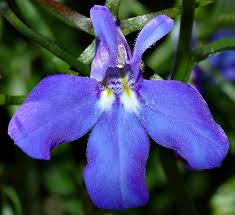
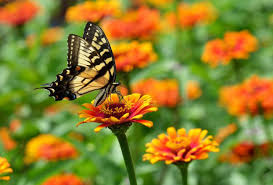
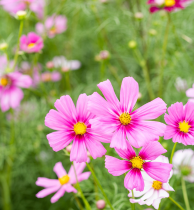
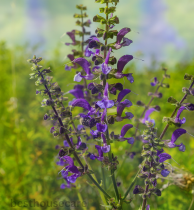
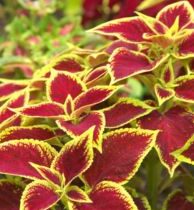
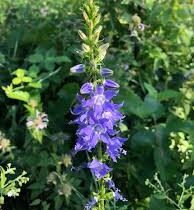
Leave a Reply
View Comments